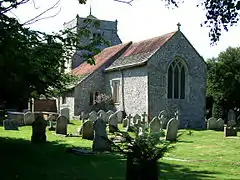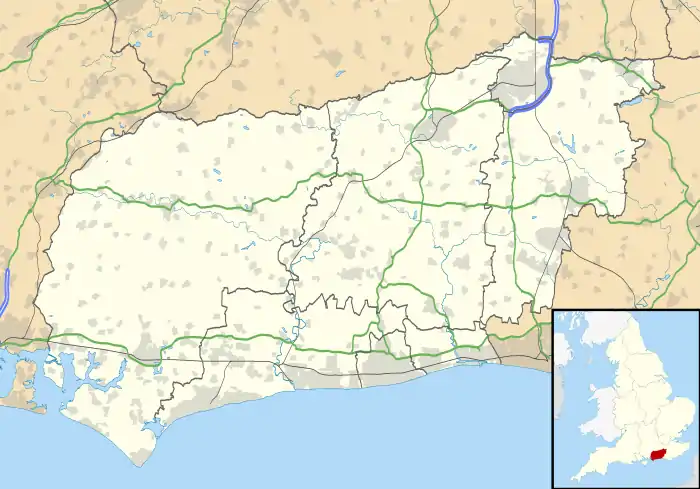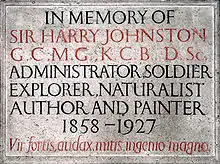Poling, West Sussex
Poling /pɒlɪŋ/ is a village and civil parish in the Arun District of West Sussex, England, 2 miles (3.2 km) southeast of Arundel on a minor road south of the A27. About 25% of the parish is wooded foothill slopes of the South Downs which is the area north of the A27 here.
| Poling | |
|---|---|
 St. Nicholas' parish church | |
 Poling Location within West Sussex | |
| Area | 3.2 km2 (1.2 sq mi) |
| Population | 174 (Civil Parish)[1] |
| • Density | 54/km2 (140/sq mi) |
| OS grid reference | TQ046047 |
| • London | 49 miles (79 km) NNE |
| Civil parish |
|
| District | |
| Shire county | |
| Region | |
| Country | England |
| Sovereign state | United Kingdom |
| Post town | Arundel |
| Postcode district | BN18 |
| Dialling code | 01903 |
| Police | Sussex |
| Fire | West Sussex |
| Ambulance | South East Coast |
| UK Parliament | |
The 2001 Census recorded 173 people lived in 75 households, of whom 96 were economically active. At the 2011 Census the population had risen only marginally to 174.[1]
The small village has two Grade I Listed buildings: the Church of England parish church of Saint Nicholas,[2] (in whose churchyard the cricketer Colin Cowdrey is buried), and some remains of St John's Priory[3] (founded by the Knights Hospitallers) beside the main road. Many of the cottages are Grade II listed.
History
Poling was an agricultural part of the Rape of Arundel, one of the traditional sub-divisions of Sussex and a former Norman barony.
In the Anglo-Saxon era Poling, like most coastal villages, had outlying areas of land in the Weald (forest) within Sussex used for summer grazing and timber production. Thus Poling gave its name to Pallingham north of Stopham and Pallinghurst west of Rudgwick. Poling also had land north of Petworth, then known as "Palinga Schittas", mentioned in a charter of AD 953. in connection with the pannage of pigs to feed on acorns.[4]
Parish church
St. Nicholas' parish church is on the south-east edge of the village next to Manor Farm and is reached by a footpath from Poling Street, next to the Old Vicarage.
Burials in St. Nicholas' churchyard include the Kent and MCC cricketer and cricket administrator Colin Cowdrey (1932–2000) and the explorer, botanist, artist and colonial administrator Sir Harry Johnston (1858–1927). Johnston is also commemorated by a wall plaque in the nave carved by the Arts and Crafts sculptor and typeface designer Eric Gill, who lived at Ditchling, East Sussex. The main typeface used on the plaque seems to be Gill's Perpetua, which he designed in 1925 but did not release until 1929. The lower-case typeface used for the Latin quote below is not presently recognised.

References
- Key Statistics; Quick Statistics: Population Density United Kingdom Census 2011 Office for National Statistics Retrieved 10 May 2014
- Historic England. "Details from listed building database (1275560)". National Heritage List for England. Retrieved 10 May 2014.
- Historic England. "Details from listed building database (1217172)". National Heritage List for England. Retrieved 10 May 2014.
- Jerrome, 2002, page 15
Sources and further reading
- Jerrome, Peter (2002). Petworth. From the beginnings to 1660. The Window Press. p. 15.
- Nairn, Ian; Pevsner, Nikolaus (1965). Sussex. The Buildings of England. Harmondsworth: Penguin Books. pp. 308–309. ISBN 0-14-071028-0.
- Page, William, ed. (1973). A History of the County of Sussex, Volume 2. Victoria County History. p. 93.
External links
![]() Media related to Poling, West Sussex at Wikimedia Commons
Media related to Poling, West Sussex at Wikimedia Commons